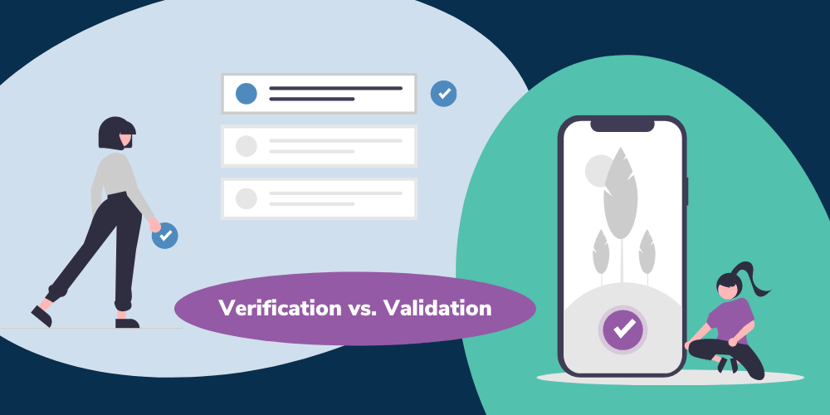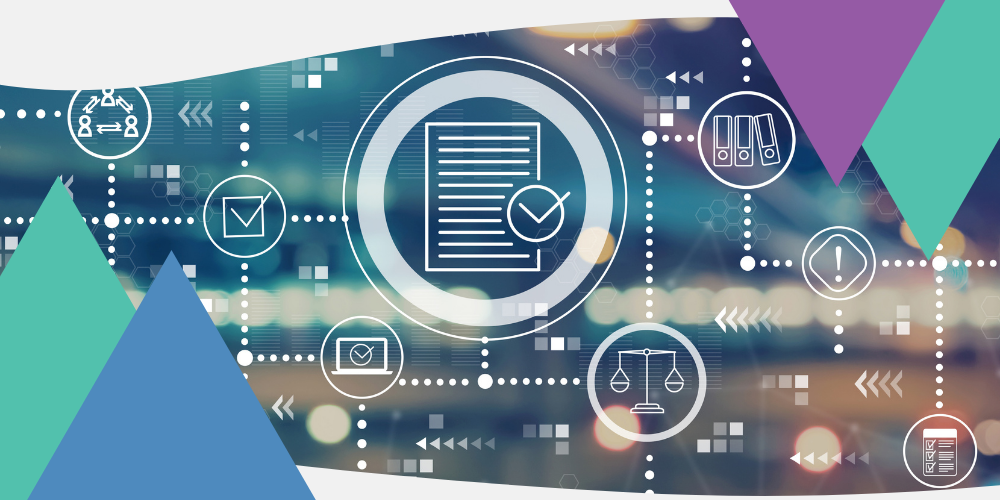
Verification vs Validation: Definitions
Software testing is a process of examining the functionality and behavior of the software through verification and validation.
- Verification is a process of determining if the software is designed and developed as per the specified requirements.
- Validation is the process of checking if the software (end product) has met the client’s true needs and expectations.

Software testing is incomplete until it undergoes verification and validation processes. Verification and validation are the main elements of software testing workflow because they:
- Ensure that the end product meets the design requirements.
- Reduce the chances of defects and product failure.
- Ensures that the product meets the quality standards and expectations of all stakeholders involved.
Most people confuse verification and validation; some use them interchangeably. People often mistake verification and validation because of a lack of knowledge on the purposes they fulfill and the pain points they address.
The software testing industry is estimated to grow from $40 billion in 2020 to $60 billion in 2027. Considering the steady growth of the software testing industry, we put together a guide that provides an in-depth explanation behind verification and validation and the main differences between these two processes.
Verification
As mentioned, verification is the process of determining if the software in question is designed and developed according to specified requirements. Specifications act as inputs for the software development process. The code for any software application is written based on the specifications document.
Verification is done to check if the software being developed has adhered to these specifications at every stage of the development life cycle. The verification ensures that the code logic is in line with specifications.
Depending on the complexity and scope of the software application, the software testing team uses different methods of verification, including inspection, code reviews, technical reviews, and walkthroughs. Software testing teams may also use mathematical models and calculations to make predictive statements about the software and verify its code logic.
Further, verification checks if the software team is building the product right. Verification is a continuous process that begins well in advance of validation processes and runs until the software application is validated and released.
The main advantages of the verification are:
- It acts as a quality gateway at every stage of the software development process.
- It enables software teams to develop products that meet design specifications and customer needs.
- It saves time by detecting the defects at the early stage of software development.
- It reduces or eliminates defects that may arise at the later stage of the software development process.
A walkthrough of verification of a mobile application
There are three phases in the verification testing of a mobile application development:
- Requirements Verification
- Design Verification
- Code Verification
Requirements verification is the process of verifying and confirming that the requirements are complete, clear, and correct. Before the mobile application goes for design, the testing team verifies business requirements or customer requirements for their correctness and completeness.
Design verification is a process of checking if the design of the software meets the design specifications by providing evidence. Here, the testing team checks if layouts, prototypes, navigational charts, architectural designs, and database logical models of the mobile application meet the functional and non-functional requirements specifications.
Code verification is a process of checking the code for its completeness, correctness, and consistency. Here, the testing team checks if construction artifacts such as source code, user interfaces, and database physical model of the mobile application meet the design specification.
Validation
Validation is often conducted after the completion of the entire software development process. It checks if the client gets the product they are expecting. Validation focuses only on the output; it does not concern itself about the internal processes and technical intricacies of the development process.
Validation helps to determine if the software team has built the right product. Validation is a one-time process that starts only after verifications are completed. Software teams often use a wide range of validation methods, including White Box Testing (non-functional testing or structural/design testing) and Black Box Testing (functional testing).
White Box Testing is a method that helps validate the software application using a predefined series of inputs and data. Here, testers just compare the output values against the input values to verify if the application is producing output as specified by the requirements.
There are three vital variables in the Black Box Testing method (input values, output values, and expected output values). This method is used to verify if the actual output of the software meets the anticipated or expected output.
The main advantages of validation processes are:
- It ensures that the expectations of all stakeholders are fulfilled.
- It enables software teams to take corrective action if there is a mismatch between the actual product and the anticipated product.
- It improves the reliability of the end-product.
A walkthrough of validation of a mobile application
Validation emphasizes checking the functionality, usability, and performance of the mobile application.
Functionality testing checks if the mobile application is working as expected. For instance, while testing the functionality of a ticket-booking application, the testing team tries to validate it through:
- Installing, running, and updating the application from distribution channels like Google Play and the App Store
- Booking tickets in the real-time environment (fields testing)
- Interruptions testing
Usability testing checks if the application offers a convenient browsing experience. User interface and navigations are validated based on various criteria which include satisfaction, efficiency, and effectiveness.
Performance testing enables testers to validate the application by checking its reaction and speed under the specific workload. Software testing teams often use techniques such as load testing, stress testing, and volume testing to validate the performance of the mobile application.
Main differences between verification and validation
Verification and validation, while similar, are not the same. There are several notable differences between these two. Here is a chart that identifies the differences between verification and validation:
|
Verification |
Validation |
|
|
Definition |
It is a process of checking if a product is developed as per the specifications. |
It is a process of ensuring that the product meets the needs and expectations of stakeholders. |
|
What it tests or checks for |
It tests the requirements, architecture, design, and code of the software product. |
It tests the usability, functionalities, and reliability of the end product. |
|
Coding requirement |
It does not require executing the code. |
It emphasizes executing the code to test the usability and functionality of the end product. |
|
Activities include |
A few activities involved in verification testing are requirements verification, design verification, and code verification. |
The commonly-used validation activities in software testing are usability testing, performance testing, system testing, security testing, and functionality testing. |
|
Types of testing methods |
A few verification methods are inspection, code review, desk-checking, and walkthroughs. |
A few widely-used validation methods are black box testing, white box testing, integration testing, and acceptance testing. |
|
Teams or persons involved |
The quality assurance (QA) team would be engaged in the verification process. |
The software testing team along with the QA team would be engaged in the validation process. |
|
Target of test |
It targets internal aspects such as requirements, design, software architecture, database, and code. |
It targets the end product that is ready to be deployed. |
Verification and validation are an integral part of software engineering. Without rigorous verification and validation, a software team may not be able to build a product that meets the expectations of stakeholders. Verification and validation help reduce the chances of product failure and improve the reliability of the end product.
 Different project management and software development methods use verification and validation in different ways. For instance, both verification and validation happen simultaneously in agile development methodology due to the need for continuous refinement of the system based on the end-user feedback.
Different project management and software development methods use verification and validation in different ways. For instance, both verification and validation happen simultaneously in agile development methodology due to the need for continuous refinement of the system based on the end-user feedback.
Testers can use automation tools developed with low code development to streamline the processes of verification and validation. Contact us today to discover how BP Logix's workflow automation platform, Process Director, can help automate your software testing process.



